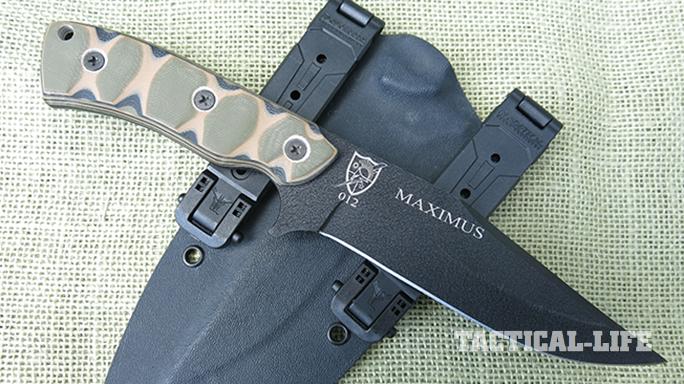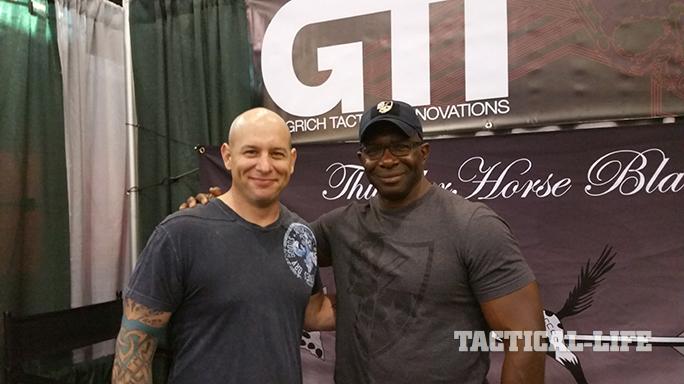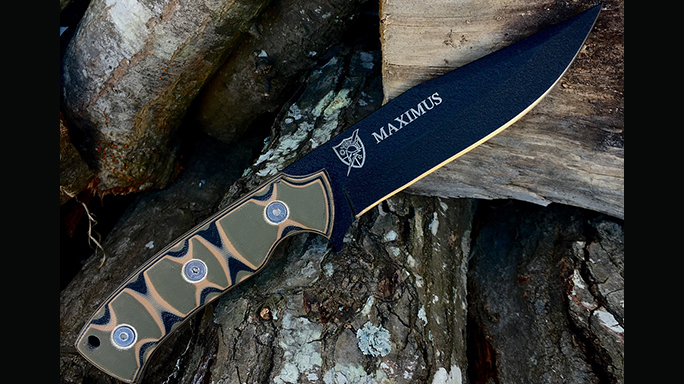It seems like at least once a week we see a press release about yet another new “SEAL Team” combat knife designed by a heroic Navy swimmer. Many of these first-time designers give me the impression that reinventing the wheel is more important to them than actually producing a useful tool for the field. On the other hand, you don’t hear much about new combat and survival blades bearing the stamp of the 75th Ranger Regiment, which is befitting for real “quiet professionals.”
The U.S. Army Rangers have been in constant combat on direct-action raids almost every night for the last 15 years. They have also made many more combat parachute jumps during the War on Terror than any of the legendary World War II Airborne units. With this kind of real field experience, it would seem that they’d be the go-to troops on the subject of battlefield cutlery. It could be that they just needed to be asked by a fellow ex-Ranger, Justin Gingrich. Enter the Maximus knife, a totally practical combat field knife designed in conjunction with Ranger Hall of Fame Master Sergeant (retired) Howard “Mad Max” Mullen. Not only is he one of the 2nd battalion 75th Rangers troops that parachuted into Grenada, but he also helped design the M9 bayonet, coauthored one of the Army’s close-combat manuals and taught hand-to-hand skills at the Ranger School for a number of years. Mullen also served in all three 75th Ranger battalions and the elite Regimental Headquarters Group.
Maximus Knife Blade Points
I talked to Mullen at length about the Gingrich Tactical Innovations (GTI) knife, and much of what he told me did not come as a surprise. Rangers are a practical, get-it-done bunch of guys. After you’ve seen as much field time as Mullen, you learn to not carry gear that simply weighs you down as opposed to gear that serves a useful purpose. When I asked Mullen about the design, he told me he was looking for a lightweight knife that would serve as an all-purpose cutting tool in the field and a lethal weapon if the need arises. He started with a 0.19-inch-thick, 6-inch-long, black-texture-coated blade made from 1095 carbon steel. Covering the full tang are G10 handle scales tri-colored camouflage. While the standard sheath is nylon, for an extra $25 you can opt for a Kydex scabbard that weighs 17 ounces. All of these knives are serial numbered, and their base price is $195.
Advertisement — Continue Reading Below
- RELATED STORY: 6 Fixed Blades Ready For Combat
GTI’s tri-colored G10 is a new handle material for me, and it certainly provides a practical camo pattern for field use. As soon as I pulled the blade from its scabbard, I knew I’d like using it. It fit my hand perfectly; 6 inches is a sweet spot for a blade’s length because it’s small enough for fine work but still long enough to make it an effective weapon in a hand-to-hand situation. I know there’s a lot of talk among web commandos that fixed-blade combat knives are too heavy for modern troops, but I’m not sure what has changed to that make that so. We carried some pretty heavy loads back in the ’60s, so I just don’t see 17 ounces being a problem; that’s just a couple of ounces heavier than a loaded 30-round magazine or an M67 hand grenade.
Aside from its military potential, the Maximus knife, like any practical field knife, is quite useful as an all-purpose, civilian, survival tool. The sweeping edge is ideal for long skinning cuts or woodworking, and its needle-sharp point is perfect for piercing. Its 0.19-inch-thick spine represents another good compromise between pure strength and cutting potential. The bottom line: If things really fall apart, I would be very happy to have this knife on my hip opposite my handgun. Overall, this knife will balance things out for me.
For more on the Maximus knife, visit gingrichtactical.com or call 507-230-0398.
Advertisement — Continue Reading Below


























